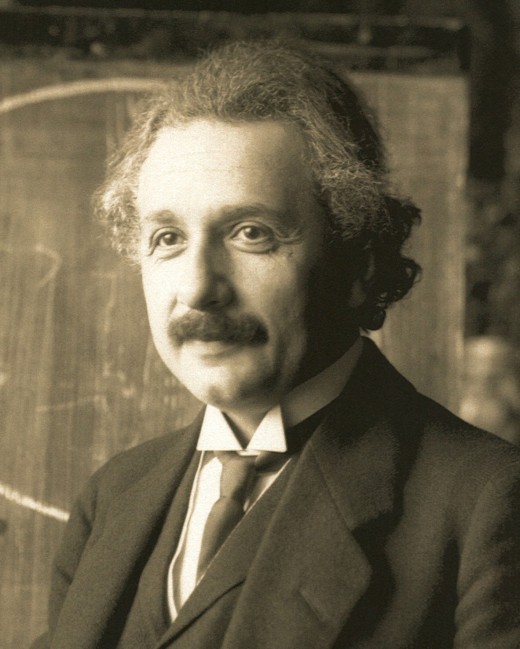Einstein vs. Wilson on Science and Religion

Debates between science and religion seem to be an inevitable part of life, most likely almost as old as humanity itself. Advocates of both groups can be unyielding, and it is hard to know if there will ever be an accepted middle ground. Both Albert Einstein and E. O. Wilson attempt to depict both sides of the debate and reach a prediction on the future state of the conflict. Einstein, in Out of My Later Years, describes religion and science as mostly compatible to certain extent and predicts that they will work together to better the world. However, he qualifies that religion must not overstep its boundaries in order for this to happen. On the other hand, Wilson, in Consilience, sees the two as naturally discordant and speculates that science will eventually win, but not until the distant future. Although Einstein’s viewpoint is more pleasant and feasible in the short term, Wilson’s philosophy will ultimately overcome other theories because it is backed by scientific thought and a search for truth. Once Wilson’s prediction comes true, Einstein’s ideas of a constant equilibrium of science and religion working together will stabilize and become the new norm.
Einstein believes that both religion and science are capable of coexisting, as long as they stick to their respective realm. He lays out his argument when he asserts that each subject has its own purpose in society: “A conflict between them appears impossible. For science can only ascertain what is, but not what should be, and outside of its domain value judgments of all kinds remain necessary. Religion, on the other hand, deals only with evaluations of human thought and action: it cannot justifiably speak of facts and relationships between facts” (Einstein 25). Science and religion complement each other, so both are quite necessary for a person to fully function. Science essentially has the ability to tell society what is happening and how, while religion gives people a sense of purpose, hope, and direction. In this way, Einstein implies that all morality is formed through some sort of religion. Although he admits that it is not based in a “rational foundation”, he claims that meaning and fulfillment from life come from religion: “A person who is religiously enlightened appears to me to be one who has, to the best of his ability, liberated himself from the fetters of his selfish desires and is preoccupied with thoughts, feelings, and aspirations to which he clings because of their super-personal value” (Einstein 24-25). Conversely, he speculates that pursuit of truth through science alone, although it plays a “part in the formation of the goal and of ethical judgments”, cannot be the sole basis for one’s morality: “The knowledge of truth as such is wonderful, but it is so little capable of acting as a guide that it cannot prove even the justification and the value of the aspiration towards that very knowledge of truth” (Einstein 22). According to Einstein, religion and science need one another in order to completely quench a person’s thirst with fulfillment.
Unfortunately for the utopic relationship between religion and science that Einstein paints, he acknowledges several flaws in his philosophy. Deviance from a simple religion based on spreading purpose and selflessness is one major source of problems: “The main source of present-day conflicts between spheres of religion and of science lies in this concept of a personal God” (Einstein 27). The idea that a god favors only a certain group of people or punishes based on simple things like dietary choices is not consistent with other religions, and therefore begs the unanswerable question of “Which religion is correct?” This turns the focus of religion away from Einstein’s ideal religion, which “cultivat[es] the Good, the True, and the Beauty in humanity itself”, and toward a battle between different religious groups to decide who is “right” (Einstein 29). Another obstacle he recognizes occurs when religion tries to impose itself in the realm of science: “A conflict arises when a religious community insists on the absolute truthfulness of all statements recorded in the Bible” (Einstein 25). In accordance with Einstein’s theories, his peaceful coexistence works only when religion stays true to its selfless purpose and does not attempt to impose on the territory of scientific facts and experiments. In an ideal world, this would be the perfect balance between science and religion; however, in reality, it is hard to maintain the peaceful status quo for long at this stage in society’s development.

In contrast to Einstein’s analysis of the science and religion debate, Wilson takes a more scientific approach and explores extensively the relationship between the origin of morals and religion. He identifies two schools of thought concerning ethics; one is based mostly on assumption and religion, while the other is more objective and skeptical: “It is between transcendentalists, those who think that moral guidelines exist outside the human mind, and empiricists, who think them contrivances of the mind” (Wilson 238). In other words, a transcendentalist believes in an independent code or set of rules that guide our moral values, whereas an empiricist believes that sets of moral values are invented by humans and are not definite. According to Wilson, there is more scientific evidence for the empiricist view, although it has not been given much attention by ethicists, who mainly speculate without taking natural science into account: “As this century closes, transcendentalism remains firm in the hearts not just of religious believers but also of countless scholars in the social sciences and humanities who… have chosen to insulate their thinking from the natural sciences” (Wilson 249). Although empiricism is not as romantic as transcendentalism seems, and can even be described as “sterile”, it can be supported by evidence in behavioral science indicating that following the same set of man-made moral codes allowed our species to prosper and reproduce (Wilson 243). The consequence of so many “experts” in the field of ethics choosing the transcendentalist train of thought is the stagnation of progress in the study of morals, even though, given the chance to be paired with data from natural science fields, they could make great leaps forward in understanding religion and morals.
Wilson also argues that both religion and moral codes are our natural response to our tribal instinct. Many years ago, before technology and life as we know it, our ancestors were struggling to survive. Forming a group and agreeing on a certain set of rules would have greatly increased their rate of success:
For more than a thousand generations they have increased the survival and reproductive success of those who conformed to tribal faiths. There was more than enough time for epigenetic rules – hereditary biases of mental development – to evolve that generate moral and religious sentiments. Indoctrinability became an instinct. (Wilson 246-247)
Through the processes of natural selection, it is easy to see how individuals more predisposed to cooperation with the tribe and its rules would live longer, therefore passing on those genetic traits favoring cooperation to more offspring. Certain rules, similar among nearly all religions, such as those forbidding murder and stealth, as well as those encouraging marriage and reproduction, would have been especially helpful to early tribes: “Moral codes are devised to conform to some drives of human nature and to suppress others” (Wilson 251). Wilson also convincingly asserts that even if there were currently no religions, we would make up ones similar to those that existed in the times of our ancestors because the need is ingrained in our psyche: “If the religious mythos did not exist in a culture, it would be quickly invented, and in fact it has been everywhere, thousands of times through history. Such inevitability is the mark of instinctual behavior in any species. That is, when learned, it is guided toward certain states by emotion-driven rules of development” (Wilson 257). This overwhelming connection between religion, morals, and biology seems to point to the fact that religion was evolutionarily advantageous for our ancestors, rather than supporting the idea that one certain religion believing in a specific god is objectively correct, contrary to what many religious people would like to believe.
Unlike Einstein, who contrives a middle ground where science and religion can coexist peacefully, which would appease almost everyone, Wilson bluntly asserts that the two will never coincide: “The uncomfortable truth is that the two beliefs are not factually compatible. As a result those who hunger for both intellectual and religious truth will never acquire both in full measure” (Wilson 262). While Wilson’s view is more cynical and less appealing than Einstein’s to people who want to believe in both religion and science, it is the more accurate of the two. One cannot believe fully and literally in an omniscient god and a factual religious text while believing in scientific facts and principles because the two contradict each other in fundamental ways. However, Wilson’s final prediction leads up to an environment in which Einstein’s utopian relationship between science and religion could realistically coexist: “The eventual result of the competition between the two world views, I believe, will be the secularization of the human epic and of religion itself” (Wilson 265). Einstein’s ideal religion, which would not include a personal god, nor a literal religious text, seems to fit the bill for the final secularized religion that Wilson prophesies. This secularized religion would be give meaning to life and direction to people’s lives, while advocating for kindness and selfless acts, but it would not interfere with scientific facts or progress. Unfortunately, it will most likely take a very long time for Wilson’s prediction to come true, and subsequently, for Einstein’s vision to come to fruition: “Change will come slowly, across generations, because old beliefs die hard even when demonstrably false” (Wilson 256). Although it will take generations for society to phase out religion and fully accept science, it seems that we are moving in the right direction.
Currently, attempting to keep society at the equilibrium proposed by Einstein is the best middle ground of the science and religion debate. However, as Wilson’s prediction slowly comes true, we will move further towards the stable state that Einstein described. Since Wilson’s theories are backed with more scientific evidence, his ideas are the most well thought out and the most likely. Once religion is secularized as he predicted, though, Einstein’s depiction of an ideal compromise will be permanent without sacrificing scientific progress. With both a purpose and the means to discover truth, as Einstein imagined, the religion and science debate will be settled in a way that satisfies all parties and will finally lay the issue to rest.
Works Cited
Einstein, Albert. “Science and Religion,” from Out of My Later Years. Seacaucus, N.J.: Citadel Press, 1956. 21-30.
Wilson, Edward O. Consilience: The Unity of Knowledge. New York: Alfred A. Knopf, 1998. 238-65.
Your Turn
Who do you agree with more?
Related Essays
- Einstein's Views on Science and Religion
An analysis of Albert Einstein's views on the relationship between science and religion. - Galileo vs. Darwin and Wallace
I have examined, compared, and contrasted the different tactics which Galileo and Darwin/Wallace use to convince the public to believe their new scientific discoveries over the religious teachings. - Camus' Parody on Religious Extremists
An analysis of "The Stranger" by Albert Camus and the parallels between the characters in the novel and religious extremists in society today. - My Evolving View on Evolution
An exploration of the differing views of evolution and the never ending struggle between religion and science. - Bokononism's Truth and Lies in Cat's Cradle
An exploration of the purpose of truth and lies in Kurt Vonnegut's novel, "Cat's Cradle" as they pertain to the made-up religion of Bokononism. The analysis is also relatable to the role of modern day religion and government in the lives of citizens. - Origin of the Infinite Universe
An exploration of society's understanding of "infinity" as it pertains to the origin of the universe. Both scientific and religiously based options are also considered.









